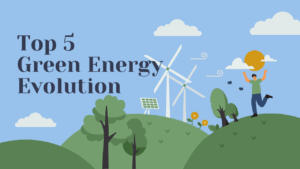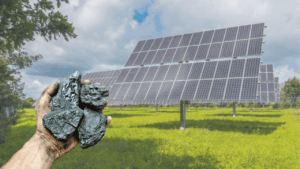Imagine if a wind farm was being built near your town or village—it wouldn’t just provide electricity, but transform an entire ecosystem: jobs, schools, biodiversity, local pride. That’s the message of the “Community Benefit in Action” report, jointly produced by Renewable UK and Scottish Renewables. The report describes how the onshore wind industry is working closely with communities, and how local people have transformed from “hosting” roles to active partners, not just passive beneficiaries.

This article will share some inspiring case studies, best practices, and how to guide policies so that benefits can reach local communities directly. Whether you’re a developer, a policymaker, or a local citizen looking at wind farm proposals, it’s important to understand what ‘community benefit’ is and how it can be effectively implemented.
Let’s embark on a journey where onshore wind is becoming not just a source of green power, but also a source of community uplift.

Overview Table
| Article | Community benefit in action: case studies from the onshore wind sector |
| Published by | Renewable UK & Scottish Renewables |
| Publication Date | 25 June 2025 |
| Stakeholders | Local communities, wind farm developers, local authorities, policymakers, NGOs |
| Official Source / Website | Renewable UK & Scottish Renewables |
Community Benefit Schemes: What are the different approaches?
The report and guides highlight a few different models:
- Community Benefit Funds (CBFs): Developers create a fund that local people can use as grants for projects. For flexible, long-term funding.
- Local Electricity Discount Schemes (LEDS): People who live near a turbine receive a bill reduction. This is one way to ensure benefits flow directly into the pockets of the people.
- Shared Ownership / Local Ownership: The community is given a share in the project, or a cooperative/benefit society is formed to receive profits and participation.

Case Studies: Real-World Examples
There are some standout case studies in the report that truly changed the meaning of community benefit:
- Brechfa Forest Wind Farm, Wales
- Capacity: 57.4 MW.
- Community Fund: £459,200 annually; funds linked to inflation.
- Use: Grants for education/training, health & well-being, culture & heritage, environment, community coherence. Over 248 grants worth ~£2.2 million between 2018-2023.

- Tirgwynt Wind Farm, Wales
- Capacity: 24 MW.
- Benefit: Community Fund used to build a new school building (saving school from closure). Also, regular grants to communities along turbine routes.
- Tallentire Wind Farm, Cumbria, England
- Capacity: 12 MW.
- Benefit Package: ~£60,000/year including LEDS + community fund. LEDS discounts for properties within 2km of turbines; community fund administered by local foundation.
- Crossdykes Wind Farm, Scotland
- Capacity: 46 MW.
- Model: Shared-ownership & community investment fund. Fund is paid annually for lifetime; regardless of shared ownership uptake. Administered via local community councils.

What Makes a Community Benefit “Good”: Best Practices
The report and guidance documents highlight some principles that ensure that benefit schemes are meaningful:
- Early and genuine community engagement: listen to local concerns, involve people in design decisions.
- Flexible fund models: Every community is different; the need is different. The model of the fund (cash, in-kind, shared ownership) should be designed accordingly.
- Transparency & governance: The fund will execute, we will have accountability, reporting, clear decision-making panels.
- Lasting legacy: Funding is not just on short term projects – education, infrastructure, environment that benefit the community over a long period of time.
Policy & Guideline Frameworks
There are some government and industry policies that follow up and guide community benefits:
- England: “Community benefits guidance for onshore wind in England & Resource Kit” published 2025, which provides case studies, templates, guidelines.
- Scotland: Good Practice Principles (GPPs) introduced in 2014, updated in 2019. Scotland’s resident projects are providing community benefit with ab ~£5,000/stalled installed MW/year commitments.
- Scottish Onshore Wind Sector Deal: among other commitments, it reaffirms the “good neighbour” approach, shared ownership, community benefit funding.
Snapshot Table
| Metric/Indicator | Value/Fact | Notes/Source |
| Community benefit funding in Scotland (annual potential by 2024-2030) | ~ £125 million per year | If planned capacity delivered. |
| Total committed community benefits from renewable projects in Scotland between 2018-2022 | Over £106 million | |
| Cumulative community benefits committed from renewables in Scotland 1990-2022 | Over £194 million | Majority from onshore wind. |
| Standard rate guideline (Scotland) for community benefit per MW per annum | £5,000 per MW per year, index-linked | According to Scottish Government Good Practice Principles, updated 2019. |
Impacts: Local Change & Transformations
These schemes are not just theoretical — real changes are taking place:
- Local jobs are being spawned, the supply chain is getting a boost.
- Biodiversity and environment projects are being funded — seed planting, habitat restoration etc. Domestic infrastructure is also improving.
- Local services, heritage, health & well-being programs: community centres, support for vulnerable groups, education programs etc.
“This report shows how onshore wind goes beyond generating clean energy, it powers real change in communities. From creating local jobs and boosting tourism to supporting biodiversity”
“Scotland’s renewable energy industry is proud of its record on community benefit funding, delivered at a scale unmatched anywhere else.”
FAQs
1: What is a Community Benefit Fund?
A Community Benefit Fund (CBF) is a financial arrangement in which the wind farm developer makes regular payments (annual or periodic) to the local community, which the community decides how to use (for infrastructure, health, well-being, environment, etc.).
2: What is the Local Electricity Discount Scheme (LEDS)?
LEDS is a model in which properties or households near a wind farm receive a discount on their electricity bills. Tallentire Wind Farm, England, is an example of where this scheme exists.
3: What are the benefits of shared ownership or local ownership?
This model allows the community to share in the project’s profits, increases their sense of ownership, and ensures long-term benefits. Shared ownership offers the opportunity to preserve community wealth.
4: How much community benefit has been committed in Scotland so far?
Between 2018-2022, renewable projects in Scotland have committed over £106 million in community benefits. If pipeline projects are delivered, annual funding could reach £125 million/year for Scotland.

